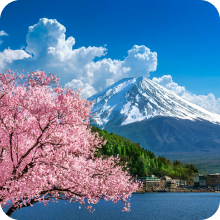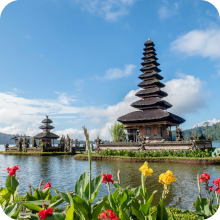What Is Bali Dance? Guide to Balinese Tradition and Art
If you've ever traveled to Bali, chances are you’ve been captivated by its rhythmic beauty and artistic splendor. Balinese dance is more than just a performance—it's an immersive cultural expression that has been refined over centuries. As an experienced traveler with over a decade of adventures under my belt, I’ve seen my fair share of cultural dances. Yet, Bali dance holds a special place in my heart for its ability to tell timeless stories through a blend of fluid gestures, vivid expressions, and hypnotic music.
Let’s dive into the enchanting world of Bali dance, explore its origins, the stories it tells, and how it continues to thrive as a symbol of Balinese identity.
Table of Contents
- Introduction to Bali Dance
- The Origins and History of Bali Dance
- The Cultural Significance of Bali Dance
- Types of Bali Dance
- Costumes and Makeup in Bali Dance
- Where to Experience Bali Dance
- FAQs About Bali Dance
The Origins and History of Bali Dance
Bali dance traces its roots back to ancient religious rituals, where it was performed to honor the gods and spirits. Influenced by Hinduism, which arrived in Bali around the 1st century AD, the dances originally functioned as offerings in temple ceremonies and other spiritual events. Over time, they evolved into more elaborate forms of storytelling, combining mythological themes with the island’s distinctive cultural flavor.
During the Majapahit era, between the 13th and 16th centuries, Bali dance became a sophisticated art form, with dance troupes performing for royalty and common folk alike. Fast forward to today, and you’ll find Bali dance in almost every village, often performed as part of religious rituals or cultural celebrations.
The Cultural Significance of Bali Dance
In Bali, dance is not just art; it’s an offering to the gods, a medium to communicate with the divine, and a vital component of temple ceremonies. The dances are deeply intertwined with the island’s spirituality, often symbolizing the eternal struggle between good and evil. Whether it's a ritualistic dance to bless crops or an elaborate performance for tourists, the essence of Balinese culture shines through every movement.
Dance performances are a core part of Balinese temple festivals, local celebrations, and even family milestones like weddings and funerals. Each movement in the dance is a symbolic gesture, and even the facial expressions, or “tetandang,” carry significant meaning.
Types of Bali Dance
There are numerous types of Bali dance, each with its unique history, style, and significance. Let’s look at some of the most famous ones you’re likely to encounter during your travels.
Legong Dance
The Legong dance is one of the most refined and intricate forms of Balinese dance. Performed by young girls, it’s characterized by graceful, synchronized movements and detailed hand gestures. The dance tells a traditional story, usually derived from Bali's epic Hindu folklore, with dancers in ornate costumes and gold headdresses.
Barong Dance
The Barong dance is one of the most iconic Balinese performances. It depicts the eternal battle between good (Barong, a lion-like creature) and evil (Rangda, the demon queen). Accompanied by gamelan music, this dramatic dance involves elaborate costumes, powerful storytelling, and intense action sequences that will leave you on the edge of your seat.
Thanks for visiting our blog, are you planing to travel to Bali? Check out our eSIM Bali.

Kecak Dance
Often referred to as the “monkey chant dance,” the Kecak dance is one of the most unique Balinese performances. It involves a large group of male dancers chanting rhythmically in unison, creating a mesmerizing soundscape as they reenact scenes from the Ramayana. The Kecak dance is typically performed at sunset, with the dramatic backdrop of Bali's temples and coastline adding to its mystical allure.
Pendet Dance
The Pendet dance is a temple welcoming dance that involves dancers scattering flower petals to symbolize offerings to the gods. Initially a purely religious performance, it has now evolved into both a ceremonial and a performance piece for visitors. The dance is simple but elegant, showcasing the dancers’ connection to their spiritual heritage.
Costumes and Makeup in Bali Dance
The costumes worn by Balinese dancers are as much a part of the performance as the movements themselves. These elaborate costumes are rich in detail, from golden headdresses and flowing sarongs to intricate jewelry that reflects Bali’s artistic traditions. Every element of the costume has symbolic significance, enhancing the character portrayed by the dancer.
Makeup is also an integral part of the performance, with bold colors used to accentuate facial expressions. The eyes play a crucial role in Balinese dance, and dancers often emphasize them with heavy eyeliner to convey intense emotions or spiritual connection.
Where to Experience Bali Dance
While Bali dance performances are common across the island, some venues offer more authentic and immersive experiences. Here are a few places you can catch these mesmerizing dances:
- Ubud Palace: Ubud is the cultural heart of Bali, and the nightly dance performances at Ubud Palace are a must-see for any visitor. The palace itself adds to the atmosphere, with its intricate architecture providing the perfect backdrop.
- Tanah Lot Temple: For a truly unforgettable experience, watch a Kecak dance at sunset by the iconic Tanah Lot Temple. The dramatic ocean views and the fiery performance create a magical atmosphere you won’t forget.
- GWK Cultural Park: Located in southern Bali, this cultural park hosts a variety of traditional Balinese dance performances, including Barong and Legong. It’s a great place to learn more about Balinese art and culture while enjoying an impressive show.
Check out local government updates before you go!
FAQs About Bali Dance
What is the most famous Balinese dance?
The Barong dance is perhaps the most famous Balinese dance, depicting the age-old battle between good and evil. Other popular dances include the Kecak and Legong dances.
What is the purpose of Balinese dance?
Balinese dance serves multiple purposes, including religious offerings to the gods, storytelling through traditional epics, and as a form of entertainment during festivals and ceremonies.
Can tourists watch Balinese dance performances?
Yes! Many venues across Bali offer dance performances for tourists, especially in places like Ubud, Tanah Lot, and cultural parks around the island. These shows are a great way to experience Balinese culture firsthand.















